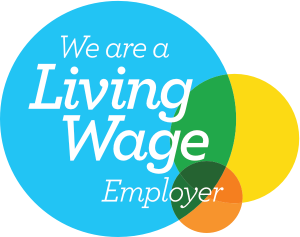Yesterday, the Charity Commission published its report into public trust in the charity sector. Despite the recent concerns about bullying and abuse, the report has revealed that overall trust and confidence in charities has remained at similar levels to 2016, when the research was last carried out. So should charity leaders be worried?
The report is helpful in that it provides useful benchmarking statistics and reaffirms that the sector should be focusing on impact, stewardship and values, but it lacks a nuanced view that reflects an understanding of what trust in the sector looks like. I would like to present a more balanced account which draws some different conclusions from the statistics.
Facts are stubborn, but statistics are more pliable
“Trust in charities remains lower than trust in the average man or woman in the street”.
What makes research so interesting is that statistics are open to interpretation. The framing of statistics can be as important and persuasive as the statistics themselves. The fact that the charity sector is the third most trusted institution, behind doctors and the police, suggests to us that the sector is actually doing ok. Being less trusted than the person in the street is a good headline, but I’m not convinced it forms a strong argument. This option appears as an anomaly in the survey: a person in the street represents an indirect personal relationship, not a relationship with a social institution.
“Our research suggests that when charities are able to show that most of their donations directly reach the end cause, and that they are having quantifiable positive results, both trust and self-reported propensity to donate increases”.
Not all outcomes are immediately tangible; not all positive results can be quantifiable. Services must be piloted and tested, sometimes at a loss, before they can demonstrably make significant change. It can take years of campaigning to achieve a change in the law. And the back office work that goes on to ensure that safeguarding practices are up to standard requires adequate funding. Perpetuating the narrative that charities should only spend their money on frontline costs with quantifiable results puts lots of organisations in a bind, and can prevent them from achieving their charitable mission. We must continue to challenge this unhelpful narrative and emphasise that investment in infrastructure is a legitimate part of charity spending.
What does trust in the charity sector look like?
Based on the findings from this report, it’s hard to say. The report acknowledges that “very few respondents immediately thought of local charities, educational organisations, or cultural institutions” when asked to define charity. This is absolutely crucial to the way we interpret the results. 97% of registered charities in England and Wales work with less than £1 million in annual income. 73% of registered charities have an annual income of below £100,000. These numbers are very significant. How can the report give the Commission “the evidence, insights and impetus needed to rebuild public trust in charity”, when all but “very few” of the respondents are only thinking about the big brand names who represent a tiny minority of the charity sector?
Charities are values-led organisations. They are established in response to an unmet need and are created, driven, sustained and, sometimes, funded by the public. For this reason, charities must be held to a very high standard, but for the same reason, we must acknowledge that charities are very much a part of society: they are not removed from it. The notion of charities as pure, saintly and even deified entities is simply unrealistic: charities are led and run by people. And while we have seen the damage this can cause when power has been abused, the very fact that charities are human is also what makes them so well-placed to deliver vital services, speak truth to power and act as an anchor in local communities. In essence, their humanity is what makes them so wonderful.
Trust in the sector is a process. It is dynamic and changeable and maintaining trust requires hard work and a huge amount of resilience. Levels of trust vary across different communities and demographics. A nuanced understanding and definition of trust must be applied before any meaningful conclusions can be drawn from these findings.
We all want the sector to be trusted; we’d all like to be top of the ‘most trusted institutions’ list. We all agree that there is still work to be done across the sector to improve practices in a number of areas. Charity leaders must continually develop, learn and be open to improvements that help them better achieve their mission. Addressing safeguarding concerns is also a priority for strengthening public trust, and ACEVO and many others are working to address these problems in the sector. But we must also prioritise the integrity of research like this and ensure that statistics are presented in a fair, balanced and accurate way. Otherwise we will be stuck in the cycle of harmful narratives, which don’t help to increase public trust in the sector or its regulator.
Grace Freeman, policy & communications officer, ACEVO
Photo by Lukas from Pexels.


